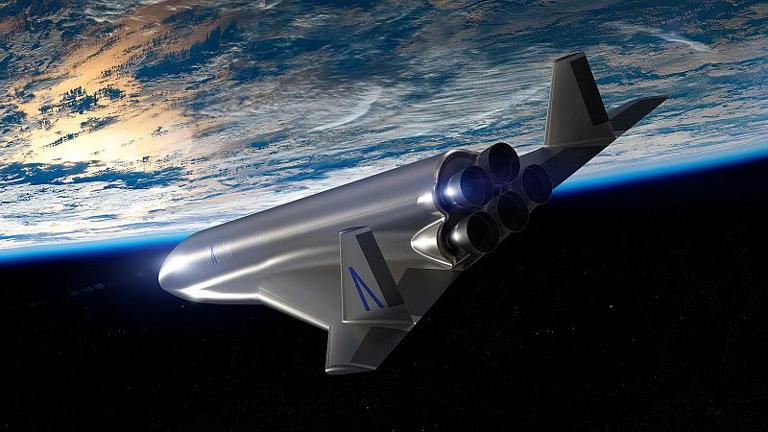The reusable 'spaceplane' that could replace rockets and fly humans to space and back
Study
Research
Main Index
Space Cosmology
Science Research
*
About
Science Research
Science Theories
Desk
Site Map
BookShelf
Copyright © by Nigel G Wilcox · All Rights reserved · E-Mail: ngwilcox100@gmail.com
Designed by Nigel G Wilcox
Powered By AM3L1A
Pages within this section:
Pages:
Sub-Menu
2
3
1
Radian One could revolutionise space travel with reusable spaceplane technology. © Radian Aerospace
An aircraft that can carry passengers and payloads out of the Earth’s atmosphere and back is set to revolutionise space missions.
Radian Aerospace, a US-based company, is preparing to test a scale model of its “spaceplane” this year, which could impact the way space travel is conducted if successful.
The company was founded in 2016 with the goal of reviving the dream of a Single-Stage-To-Orbit (SSTO) spaceplane - a goal that NASA attempted through the Lockheed Martin X-33 programme before ceasing funding in 2001.
The new spaceplane, called Radian One, is set to be fully reusable and is designed to replace traditional vertical launches with a rocket-powered sled system.
"We believe that widespread access to space means limitless opportunities for humankind," Richard Humphrey, CEO and co-founder of Radian Aerospace, said in a statement.
"Over time, we intend to make space travel nearly as simple and convenient as airliner travel. We are not focused on tourism, we are dedicated to missions that make life better on our own planet, like research, in-space manufacturing, and terrestrial observation, as well as critical new missions like rapid global delivery right here on Earth".
While rockets remain the most effective and dominant method for launching objects into space to date, they come with significant drawbacks, with NASA even describing them as "terribly inefficient and expensive".
However, spaceplanes, which require less fuel and are fully reusable, could offer a more economical and comfortable alternative for space travel.
A new way to reach space
Radian One is a space vehicle designed to launch and land horizontally, much like a jet aircraft, setting it apart from traditional rockets that launch vertically.
The spacecraft uses a rocket-powered sled on a two-mile-long rail to accelerate from a standard runway before its engines take over for the journey into space.
This sled system reduces the amount of fuel the vehicle needs to carry, which could potentially lower costs and even provide a more comfortable experience for passengers.
According to the Radian Aerospace website, the spaceplane can fly up to 100 missions. It also allows for rapid turnaround times, with the possibility of relaunching the vehicle just 48 hours after it returns to Earth.
Radian One can also carry up to five crew members and remain in orbit for up to five days, allowing time for various missions such as scientific research, satellite deployment, or other space operations.
It is designed to be a SSTO vehicle, meaning one that can reach space without shedding any parts along the way, by combining three key technologies.
These include the sled launch system that powers both the sled's and the spaceplane's engines, allowing the spaceplane to start with a full fuel tank, a landing gear designed exclusively for landing, which reduces the vehicle’s weight, and wings that provide lift during ascent, which reduces the amount of thrust needed to reach orbit.
For now, Radian Aerospace is planning to have a full-size version of Radian One ready by 2028, though it may take additional time for the vehicle to reach orbit.
4
Courtesy: Story by Imane El Atillah - msn- EuroNews 05.09.24











